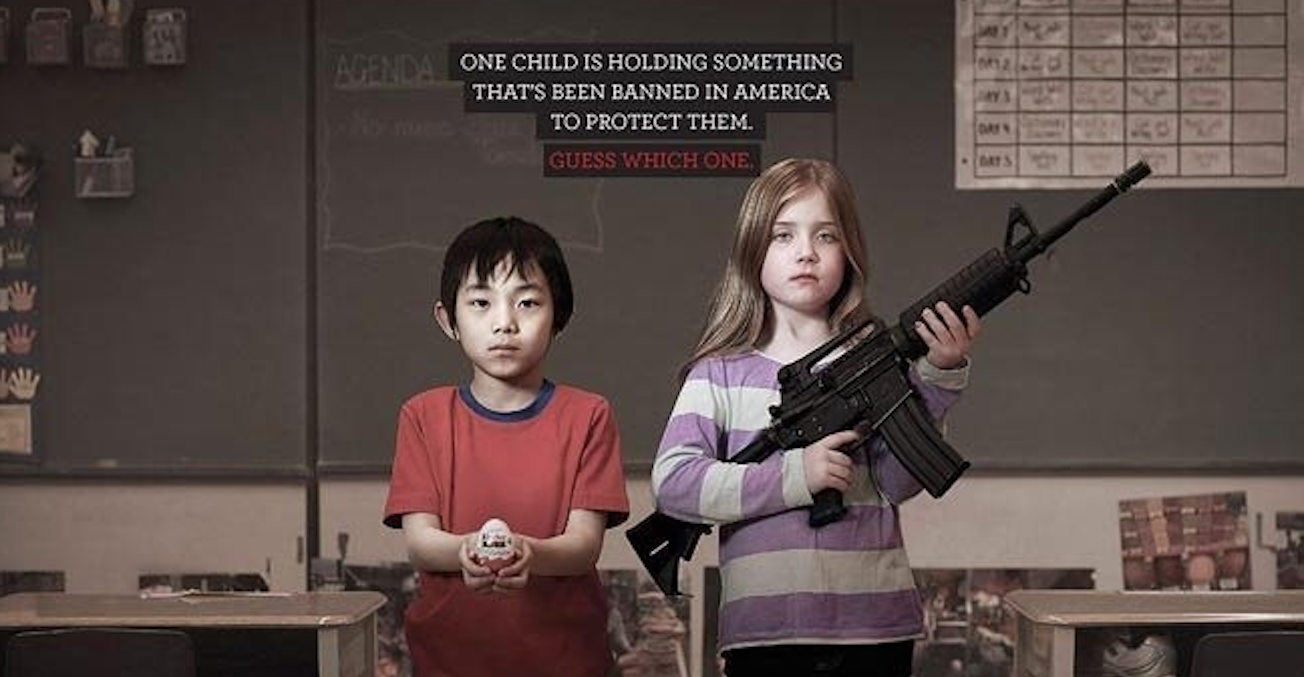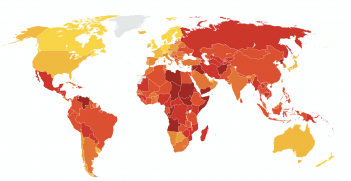Will US Gun Violence Drive Migration to Safe Haven States?

Following any major gun violence incident in America, a debate is sparked between two fundamentally opposed sides that eventually fades away with little or no significant policy changes. It seems inevitable then that parents will look outside of American borders for safer alternatives.
Each time the gun control debate is reignited, the same actors voice the same arguments for and against expanding gun control legislation. While this battle ensues, parents around the country hug their kids a bit tighter, thinking of the children who did not come home from school that day.
Each day we inch closer to a reality in which school shootings are taken for granted. Rather than being tragic and extraordinary circumstances, school shootings fall into the same category as a tornado: an unfortunate and periodic occurrence that can only be prepared for, not prevented. The most recent solutions to the problem of school shootings are bullet-proof backpacks and armed teachers. When will parents decide that enough is enough?
Parents do have another option for keeping their children safe: they can choose to leave and educate their children elsewhere. It is quite remarkable that this option has yet to enter the public consciousness (though it is not surprising, given that the national response to a mass shooting has solidified into a routine). There are plenty of countries around the world where a school shooting has never taken place. There are even more where it has only happened once or twice. America is the only place where school shootings happen on regular basis.
Will American parents make the decision to leave their homeland in order to secure a safer life for their children? The answer short answer is probably not. Embedded into the American psyche is that the nation is a “Land of Immigrants”: for generations people from all corners of the globe have immigrated to America in search of the American Dream. Rarely do people leave.
So secure are American citizens within their borders that less than half have valid passports, most of which are used for travel to Canada and Mexico. Inherent in the national psyche is that Americans are living their best life. Many people will acknowledge that other countries may do particular things better or more efficiently than they are done in America (healthcare, gun control, infrastructure, finance, etc), but that nowhere does everything better. This attitude, combined with a national narrative of suffering and sacrifice borne by millions of immigrants who left everything behind in search of a better life virtually guarantees an unwillingness to leave, no matter how hard things get.
Nevertheless, let us explore what a new wave of gun safety migration might look like for safe haven states like Australia. The policies Australia created following the Port Arthur massacre in 1996 frequently appear as evidence for both sides of the gun control debate. For those looking to limit public access to weapons, Australia is touted as a success story, in which law-abiding citizens were willing to give up their weapons following a national tragedy. On the other hand, this state-mandated intrusion on personal freedom is precisely the danger that gun advocates warn against (never mind that Australia’s policies have actually worked). Sadly, Australia has little voice in the matter; Malcolm Turnbull declined the invitation to advise President Trump on gun control at a recent press conference.
Meanwhile, countries around the world are tightening immigration requirements and pursuing controversial policies in the name of border protection. Fears include accepting terrorists posing as refugees, overburdened social welfare systems to which migrants do not contribute and dilution of the existing national culture. Those fleeing gun violence are perhaps akin to economic migrants, rather than refugees. This bodes well for assimilation in a new country, but immigration of this sort is nevertheless impeded by policies that are becoming ever stricter.
For parents in search of safe schools, the decision to leave America would be deliberate. In this aspect, they are far luckier than emigrants whose choices are forced by immediate financial or social stressors. Those who choose to leave are likely well-off and would not put significant strain on the social welfare system of the accepting nation.
Australia is particularly poised to be the gun-free haven of choice for fleeing Americans. The two states share a language, common history and much popular culture, making assimilation easy. An excellent, internationally competitive education system (in which only three people have ever died in school shooting incidents) ensures that parents would not have to sacrifice quality for safety. While it is possible that a small influx of Americans into Australia would create closer ties and build good-will, it is equally likely that immigration in great enough numbers would cause animosity between the two states.
Perhaps the idea to leave America will never occur to American parents. Children will continue to be killed, each incident slowly desensitising parents to the tragedy they may one day face. Or perhaps the recent shooting in Parkland, Florida will be the catalyst for meaningful policy change to occur. As with any sweeping policy transformation in America, there is rarely one single incident that drives change. Rather it is the momentum built up by a series of events that forces the public to confront long-held practices and beliefs. The sooner this happens with gun control, the safer American schoolchildren will be.
Nancy Schneider is an American in Australia studying for her Master’s of International Relations at the ANU. Her research interests include disaster relief and global health.
This article is published under a Creative Commons Licence and may be republished with attribution.





